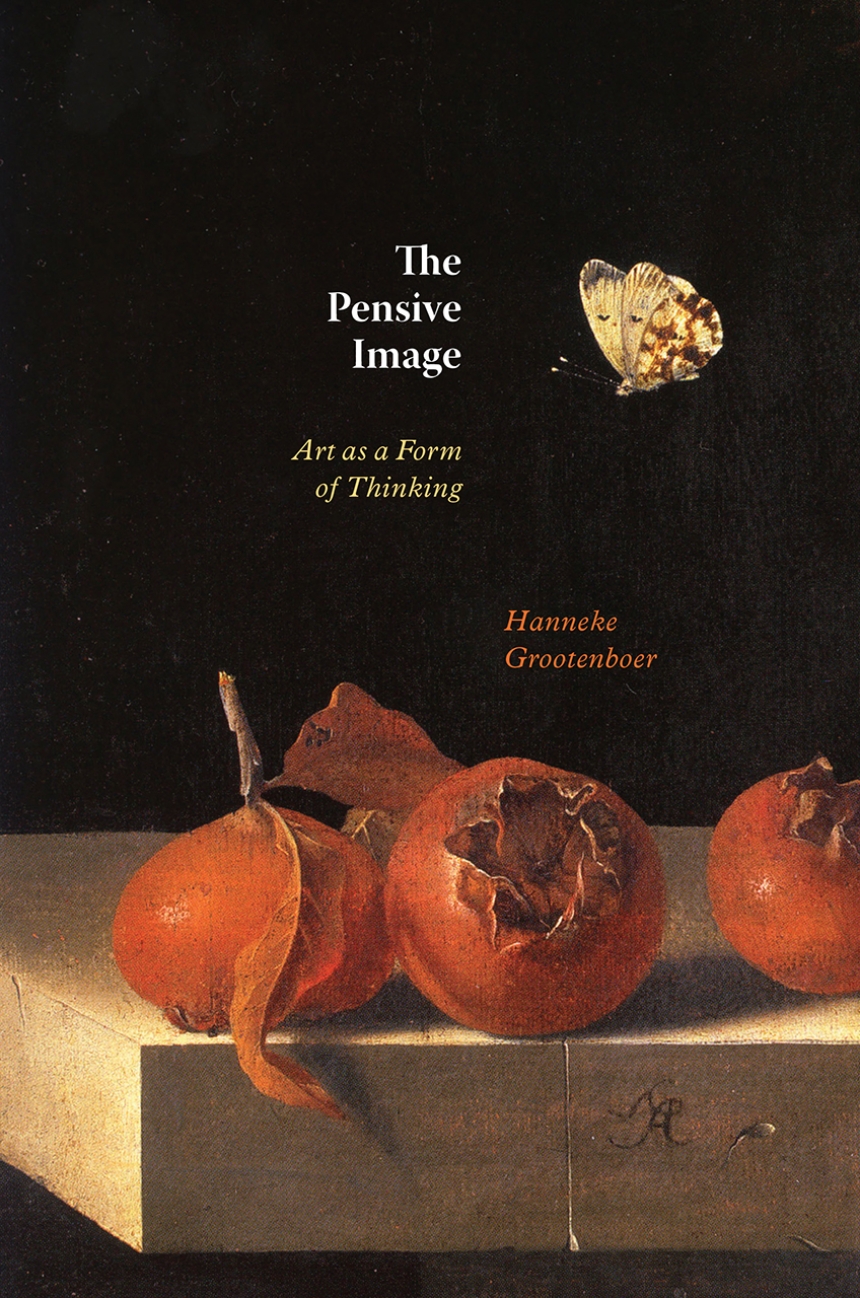The Pensive Image
Art as a Form of Thinking
Grootenboer considers painting as a form of thinking in itself, rather than a subject of philosophical and interpretive thought.
While the philosophical dimension of painting has long been discussed, a clear case for painting as a form of visual thinking has yet to be made. Traditionally, vanitas still life paintings are considered to raise ontological issues while landscapes direct the mind toward introspection. Grootenboer moves beyond these considerations to focus on what remains unspoken in painting, the implicit and inexpressible that manifests in a quality she calls pensiveness. Different from self-aware or actively desiring images, pensive images are speculative, pointing beyond interpretation. An alternative pictorial category, pensive images stir us away from interpretation and toward a state of suspension where thinking through and with the image can start.
In fluid prose, Grootenboer explores various modalities of visual thinking— as the location where thought should be found, as a refuge enabling reflection, and as an encounter that provokes thought. Through these considerations, she demonstrates that artworks serve as models for thought as much as they act as instruments through which thinking can take place. Starting from the premise that painting is itself a type of thinking, The Pensive Image argues that art is capable of forming thoughts and shaping concepts in visual terms.
While the philosophical dimension of painting has long been discussed, a clear case for painting as a form of visual thinking has yet to be made. Traditionally, vanitas still life paintings are considered to raise ontological issues while landscapes direct the mind toward introspection. Grootenboer moves beyond these considerations to focus on what remains unspoken in painting, the implicit and inexpressible that manifests in a quality she calls pensiveness. Different from self-aware or actively desiring images, pensive images are speculative, pointing beyond interpretation. An alternative pictorial category, pensive images stir us away from interpretation and toward a state of suspension where thinking through and with the image can start.
In fluid prose, Grootenboer explores various modalities of visual thinking— as the location where thought should be found, as a refuge enabling reflection, and as an encounter that provokes thought. Through these considerations, she demonstrates that artworks serve as models for thought as much as they act as instruments through which thinking can take place. Starting from the premise that painting is itself a type of thinking, The Pensive Image argues that art is capable of forming thoughts and shaping concepts in visual terms.
240 pages | 16 color plates, 26 halftones | 6 x 9 | © 2020
Art: Art Criticism, European Art
Literature and Literary Criticism: General Criticism and Critical Theory
Philosophy: General Philosophy
Reviews
Table of Contents
Art as a Form of Thinking
Part I | Defining the Pensive Image
Chapter 1 | Theorizing Stillness
Chapter 2 | Tracing the Denkbild
Part II | Painting as Philosophical Reflection
Chapter 3 | Room for Reflection: Interior and Interiority
Chapter 4 | The Profundity of Still Life
Chapter 5 |Painting as a Space for Thought
Painting’s Wonder
Acknowledgments
Notes
Bibliography
Index
Part I | Defining the Pensive Image
Chapter 1 | Theorizing Stillness
Chapter 2 | Tracing the Denkbild
Part II | Painting as Philosophical Reflection
Chapter 3 | Room for Reflection: Interior and Interiority
Chapter 4 | The Profundity of Still Life
Chapter 5 |Painting as a Space for Thought
Painting’s Wonder
Acknowledgments
Notes
Bibliography
Index
Awards
American Society of Aesthetics: American Society of Aesthetics Outstanding Monograph
Won
